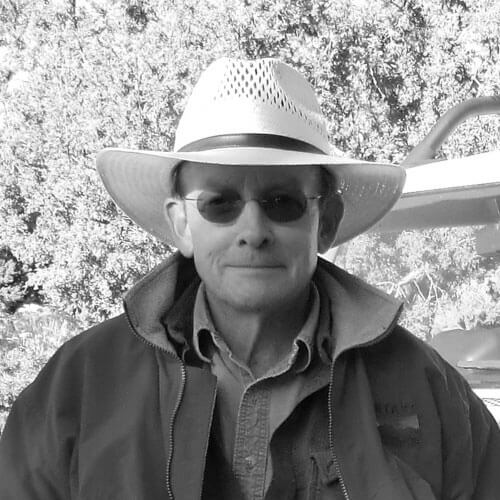Philip Metcalf was born in the Finger Lakes area of central New York State. He is a photographer who focuses mainly on the landscape, shooting in black & white infrared. The
Fire Ghosts portfolio explores the devastation and unexpected beauty caused by the 2011 Las Conchas forest fire in New Mexico.
In 2013, a photo from this portfolio was selected for the Art of Photography show, curated by Julia Dolan, the Curator of Photography at the
Portland Art Museum and hung in the
San Diego Art Institute. Also in 2013, he was a Nominee in the Black & White Spider Awards. In 2014, another photo from the portfolio was selected for the cover of Black & White Magazine (issue # 104).
A graduate of Princeton University, Philip and his wife, photographer Patricia Galagan, live in Santa Fe, New Mexico.
Interview with Philip Metcalf
AAP: Where did you study photography? With Whom? Two most important teachers were
Charles Harbutt and
Kate Carter back in the 1970’s.
Harbutt’s class at The Maine Photo Workshops was ostensibly about the camera, but the real message was the difference between how your eye sees the world vs how a camera sees the world.
Like many young photographers, I started with a couple of camera bodies and several lens. Accordingly, much of one’s time and attention was spent on thinking about equipment combinations. In Ireland with Kate, I was bemoaning the lack of great results. Kate said something was elegantly simple and utterly true:
“Remember, it’s all about the light.” That afternoon I went shooting with one body and one lens, a practice that I have followed ever since.
AAP: What or who inspires you? Nature, especially the wide-open spaces of the Western United States. When I lived on the East Coast, I asked a friend visiting from the West what he thought of the Eastern part of the US. He said it was fine except that he couldn’t see anything. I never really understood what he meant until moving to Santa Fe, New Mexico. The vast expanses of the West with their unobstructed views for miles and miles are a very different experience than the more circumscribed views of the East.
AAP: How could you describe your style? Based on nature and the real world, but slightly abstracted.
AAP: Do you have a favorite photograph or series? My
Fire Ghosts portfolio.
